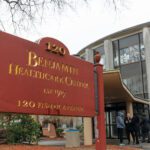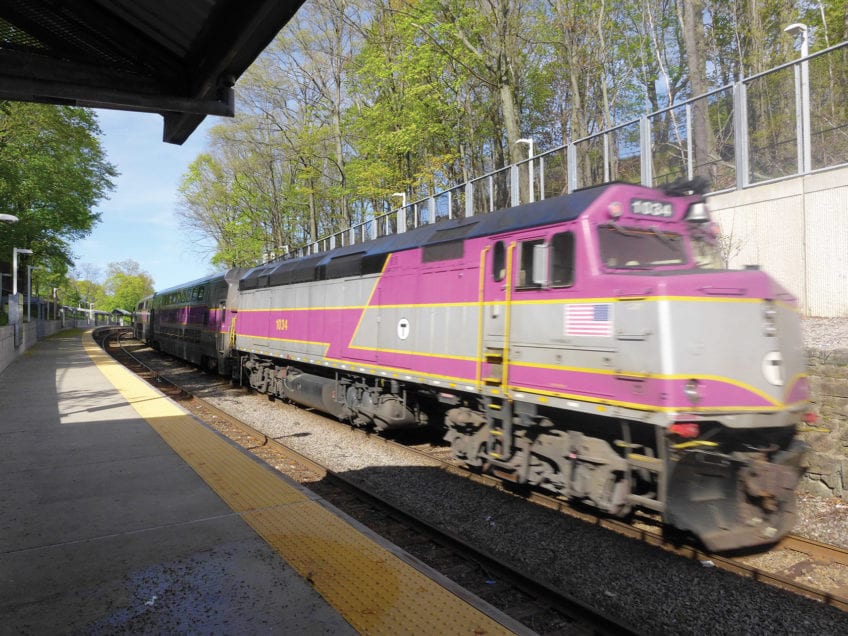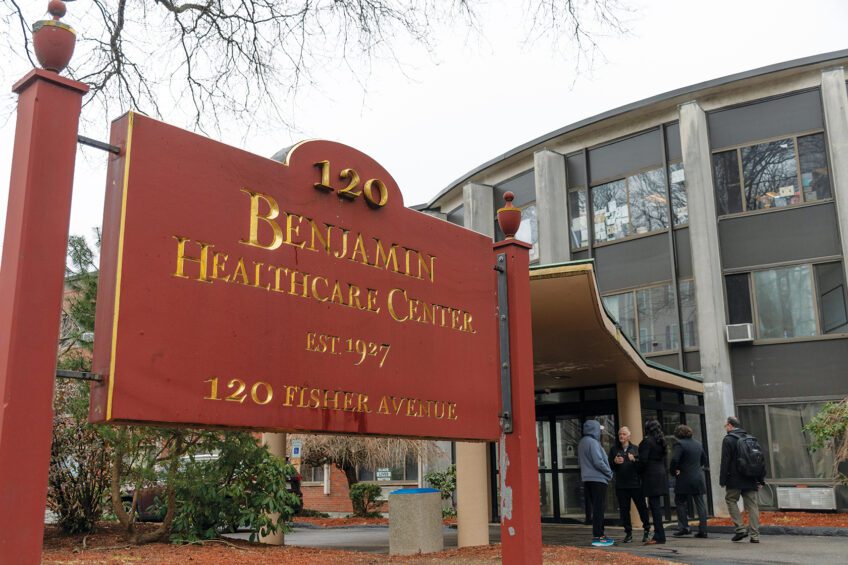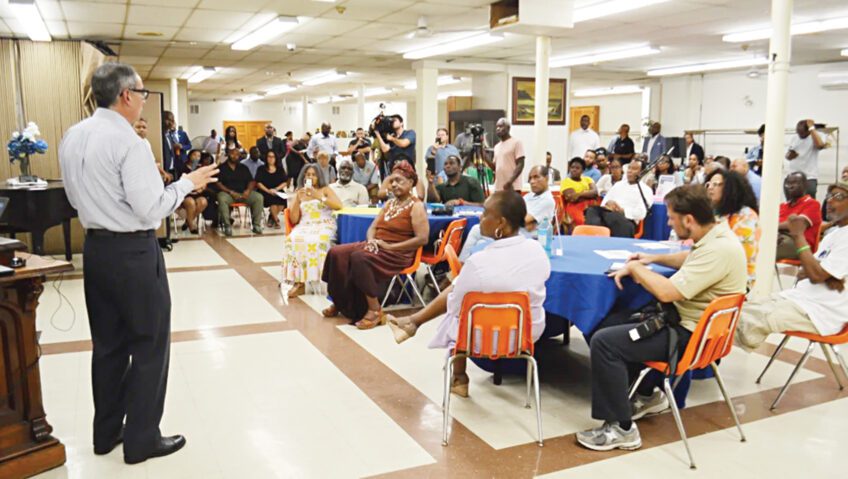Last week, Mayor Martin Walsh released a proposed budget for fiscal year 2017. Even as Walsh announced new initiatives, he emphasized that paying for them was only possible because the city made reductions and efficiencies elsewhere.
It was by making city operations more cost-efficient “that we were able to make any investments at all,” Walsh said.
Walsh’s $2.97 billion budget includes new items such as additional homelessness services, early voting and a pilot body camera program. Meanwhile, officials said they used a data-driven approach to find ways to save — such as trimming down the traditionally high levels of police overtime — to free up funds for other areas.
In the FY 2017 budget, the city’s highest allocations are for education and public safety. But Walsh administration officials warned that some costs are growing at dangerous rates, especially personnel expenditures, which are driven by rising pension and health care costs, and charter school tuitions.
“Personnel costs are vastly exceeding what we can absorb in the long term,” said David Sweeney, Boston’s chief financial officer, at the meeting.
BPS gets and gives
Even as city spending on Boston Public Schools increases, with the school system constituting 35 percent of the budget, BPS still faces major shortfalls.
The mayor plans to roll out 200 more K1 seats this year. The budget also includes investments in the Opportunity Achievement Gap Office, data systems and transition services for special education students, as well as funding to replace expiring federal and state grants for extended hours and professional development.
Meanwhile cost-saving measures include increasing the student-to-staff ratio for special education classrooms.
State government contributes toward public education based on its determinations of how much it costs to educate a child adequately and how much of that cost state officials believe the municipality can cover. Not only has state aid to Boston been declining since FY 2008, the state also calculates each pupil’s funding needs as lower amount than the city does.
The city spends more per pupil than any major city in the nation, city Budget Director Katie Hammer said at the meeting, although Boston also serves more special education students and has higher transportation costs than comparable districts.
Some suggest Boston’s priority spending on education may be worth it. City Councilor Tito Jackson, chair of the Committee on Education, noted that Boston is nationally renowned for its SPED services, and he raised concerns that increasing the student to staff ratio in SPED classrooms would be detrimental to that success.
Charter schools
One strain on Boston’s finances, Walsh told attendees, is charter school funding. The city’s charter tuition payments have been growing — they are 5 percent of the FY 2017 budget — while state-provided charter reimbursements have been declining.
The city’s charter assessment is projected to grow 131 percent or by approximately $90 million between fiscal year 2011 and 2017, according to Sweeney. Meanwhile, for the past two years, the state has underfunded charter reimbursements by $28 million.
Sam Tyler, president of Boston Municipal Research Bureau, told the Banner that this underfunding of reimbursements is felt outside of education. It prompts the city to direct a greater share of its tax revenue to education, leaving less available for other departments.
Body cameras
The Walsh administration put funding toward the anticipated police body camera pilot program, allocating half a million dollars for project management and stating expectations of acquiring the equipment free or greatly-discounted prices. Later that day, the Boston Police Camera Action Team issued a press release highlighting a state grant that offers $275,000 to cities and towns for implementing such pilot programs.
Members of the Walsh administration cautioned that implementing the pilot will require more than funding. Walsh said that official negotiations with the police unions are still needed and may include an addendum to police contracts that adds camera use as a term of employment. Boston Police Department Commissioner William Evans has dispatched a team to discuss and observe use of body cameras in North Carolina, Walsh added.
The pilot is expected to provide cameras for 100 officers, Lt. Detective Mike McCarthy, BPD director of media relations told the Banner prior to the mayor’s budget unveiling. A citywide body camera implementation would come with a multimillion-dollar price tag, Sweeney said.
Dangerous dependency
Walsh’s presentation highlighted the need to generate more city funding, particularly through diversifying its revenue sources. The city’s long dependence on property tax only has increased: In FY 2002, the city received 52 percent of its revenue from property tax and 30 percent from state aid. In FY 2017, the city expects property tax to constitute 68 percent of its revenue, followed by state aid at a distant second: 15 percent.
The state’s trend toward tax cuts has reduced its revenue and, with it, the funding the state makes available for local aid, Noah Berger, president of Massachusetts Budget and Policy Center, told the Banner.
“We’ve had a long term pattern of the state cutting state income taxes, particularly taxes the high-income people pay,” Berger said.
“The second largest revenue source for the City of Boston [state aid] is really growing very slowly in relation to expenditure growth,” Sam Tyler said. “As a result the city has had to use a larger share of property tax, which it can, but only because of the new growth.”
Proposition 2 1/2 strictly curtails property tax levels in Boston. As such, the city largely increases revenue not by raising taxes but by new construction, expanding the tax base. For fiscal year 2017, the Walsh administration anticipates that new development will generate a 4.9 percent growth in property tax revenue.
But officials noted that the development market is liable to change abruptly.
“Having such heavy dependence on property tax is unsustainable,” Walsh said. “In a down economy it will be a problem.”
Some other major cities have revenue streams that Boston lacks, such sales and income taxes, noted Walsh administration members.
“We have a severely limited tool kit compared to other cities and towns,” Sweeney said.
However, the mayor said any move to grant Boston such powers is unlikely to pass at the State House, and he added that pursuing full payment in lieu of taxes from property tax-exempt institutions — such universities and hospitals — could only bring minor relief. Instead, Walsh said Boston needs to appeal to the state for greater funding as well as find revenue sources that can be designated specifically for schools and transportation.






